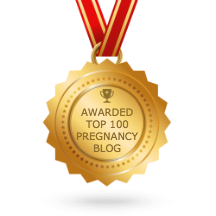Section I – Are the following statements True or False?
1. When a woman becomes pregnant, she should cut down on her salt intake.
2. A woman’s weight gain in pregnancy must be controlled in order to reduce her chances of a difficult labor.
3. Taking prenatal vitamins and mineral supplements will satisfy a pregnant woman’s special nutritional needs.
4. Swelling of ankles, fingers, and face (edema) is a danger sign in pregnancy calling for the elimination of salt from the diet.
5. A baby’s length and weight at birth depends on the parents’ stature.
6. Brain damage in babies is primarily caused by difficulties at the time of birth.
7. Mothers pregnant with twins should expect them to be born ahead of time and to weigh less than 5 1/2 pounds each.
8. Obstetricians receive training in applied nutrition for pregnancy as part of their residency programs.
9. A high-protein, low-calorie diet is desirable in pregnancy.
10. Pregnancy imposes a nutritional stress only on adolescents and women who were poorly nourished before they became pregnant.
Section II – Choose the best answer.
1. During pregnancy a woman should gain:
- at least 24 pounds.
- no more than 24 pounds over her ideal weight.
- the number of pounds her doctor recommends.
- none of the above.
2. Babies have the lowest incidence of brain damage when their mothers gain:
- 0 to 15 pounds.
- 16 to 25 pounds.
- 26 to 35 pounds.
- 36 pounds or more.
3. Healthy mothers and healthy babies result when the mother’s pregnancy weight gain follows a pattern of:
- 4 pounds a month throughout pregnancy.
- nothing in the first three months, 4 pounds a month for the next three months, then a pound a week until birth.
- 1/2 pound each week throughout pregnancy.
- none of the above.
4. Milk and eggs are good foods for pregnant women because:
- they contain all the known nutrients in a balanced form.
- they are low in sodium (salt).
- they are low in calories.
- they are not good foods for pregnant women because they are high in cholesterol.
5. When a woman follows a sound nutrition program for pregnancy, her chances of experiencing hemorrhage and poor postpartum healing are:
- increased.
- decreased.
- not affected in any way.
- dependent on her care in the hospital recovery room.
6. The most reliable indicator of a baby’s future mental and physical development is:
- the Apgar score given at birth.
- the physical exam given at one month of age.
- the baby’s weight at birth.
- the mother’s weight gain during pregnancy.
7. Nausea or vomiting in early pregnancy is best helped by:
- eating plain crackers before arising.
- eating high protein snacks throughout the day and night.
- eating as little as possible.
- eating foods high in vitamin C.
8. Metabolic toxemia of pregnancy is caused by:
- malnutrition.
- a poorly functioning placenta.
- excess salt intake.
- excess weight gain in pregnancy.
9. The best advice for pregnant women about salt intake is:
- salt food to taste.
- salt food while cooking, but use none at the table.
- avoid all foods high in sodium and use none in cooking.
- take in no more than two grams a day.
10. A sound diet for pregnancy includes every day at least:
- 25 grams of protein and 1,200 calories.
- 40 grams of protein and 1,500 calories.
- 60 grams of protein and 2,000 calories.
- 80 grams of protein and 2,600 calories.
Answers
Section I – All statements are False.
Section II –
| 1 — d | 6 — c |
| 2 — d | 7 — b |
| 3 — d | 8 — a |
| 4 — a | 9 — a |
| 5 — b | 10 — d |










